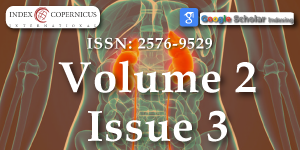Liver cyst infection in kidney transplant patient with autosomal dominant polycystic kidney disease: Interest of PET/CT in diagnosis and treatment
Main Article Content
Abstract
Liver cyst infection in patients with autosomal dominant polycystic kidney disease (ADPKD) is a rare but life-threatening complication. Diagnosis and treatment remain challenging. We report the case of a 64-year-old kidney transplant patient presenting with fever and abdominal pain. The diagnosis of liver cyst infection was made by positron emission tomography scan (PET/CT). Moreover, the course of our patient illustrates the interest of subsequent PET/CT during follow-up as our patient failed on antibiotherapy and required liver cyst drainage.
Article Details
Copyright (c) 2018 Georgery H, et al.

This work is licensed under a Creative Commons Attribution 4.0 International License.
Gall TM, Oniscu GC, Madhavan K, Parks RW, Garden OJ. Surgical management and longterm follow‐up of non‐parasitic hepatic cysts. HBP (Oxford). 2009; 11: 235-241. Ref.: https://goo.gl/nXsEUK
Pirson Y, Kanaan N. Complications infectieuses associées à la polykystose rénale autosomique dominante. Nephrol ther. 2015; 11: 73-77. Ref.: https://goo.gl/7XVxEt
Lantinga MA, Geudens A, Gevers TJG, Drenth JPH. Systematic review: the management of hepatic cyst infection. Aliment Pharmacol Ther. 2015; 41: 253–261. Ref.: https://goo.gl/B33yyd
Sallee M, Rafat C, Zahar JR, Paulmier B, Grunfeld JP, et al. Cyst infections in patients with Autosomal Dominant Polycystic Kidney Disease. Clin J Am Soc Nephrol. 2009; 4: 1183-1189. Ref.: https://goo.gl/UKhJVJ
Lantinga MA, De Sevaux RG, Drenth JP. 18F-FDG PET/CT during diagnosis and followup of recurrent hepatic cyst infection in autosomal dominant polycystic kidney disease. Clin Nephrol. 2015; 84: 61–64. Ref.: https://goo.gl/4JUrij
Neuville M, Hustinx R, Jacques J, Krzesinski JM, Jouret F. Diagnostic Algorithm in the Management of Acute Febrile Abdomen in Patients with Autosomal Dominant Polycystic Kidney Disease. PLoS ONE. 2016; 11: e0161277. Ref.: https://goo.gl/zbGgUP
Fukasawa H, Kaneko M, Niwa H, Yasuda H, Kumagai H, et al. Carbohydrate antigen 19-9 is significantly elevated in autosomal dominant polycystic kidney disease. Nephrology (Carlton). 2018; 23: 210-216. Ref.: https://goo.gl/awzFJ6
Lantiga MA, Drenth JP, Gevers TJ. Diagnostic criteria in renal and hepatic cyst infection. Nephrology Dialysis Transplantation. 2015; 30: 744-7451. Ref.: https://goo.gl/p5Qjj4
Chapman AB, Devuyst O, Eckardt KU, Gansevoort RT, Harris T, et al. Autosomal Dominant Polycystic Kidney Disease (ADPKD): Executive Summary from a Kidney Disease: Improving Global Outcomes (KDIGO) Controversies Conference. Kidney international. 2015; 88: 17-27. Ref.: https://goo.gl/RtcfYY
Suwabe T, Araoka H, Ubara Y, Kikuchi K, Hazue R, et al. Cyst infection in autosomal dominant polycystic kidney disease: causative microorganisms and susceptibility to lipidsoluble antibiotics. Eur J Clin Microbiol Infect Dis. 2015; 34: 1369–1379. Ref.: https://goo.gl/yd4XSB
Pirson Y, Chauveau D, Devuyst O. Autosomal dominant polycystic kidney disease. In: Davidson AM, editor. Oxford textbook of clinical nephrology. 3rd ed, Oxford: Oxford University Press. 2005; 2304-24.





